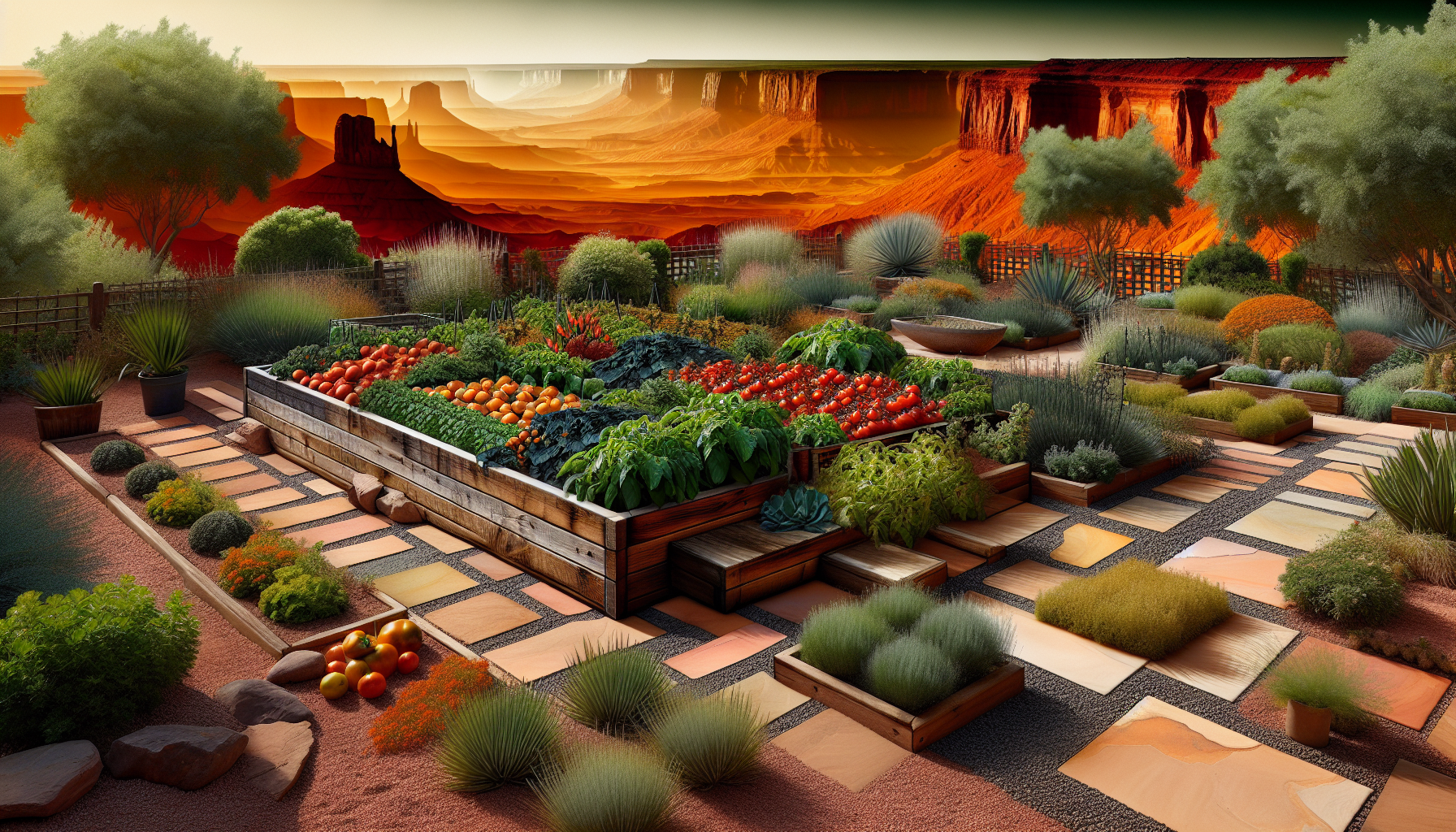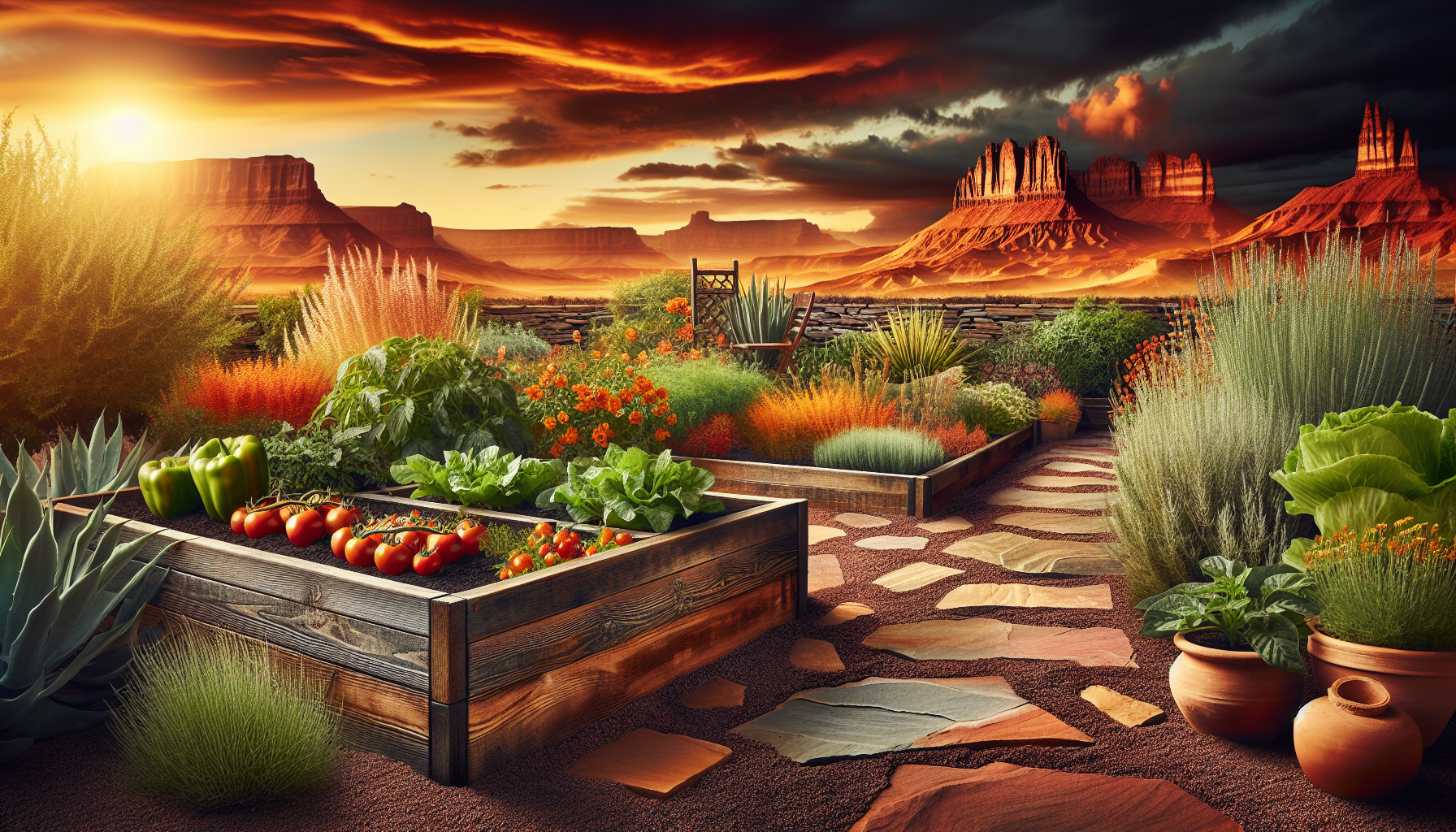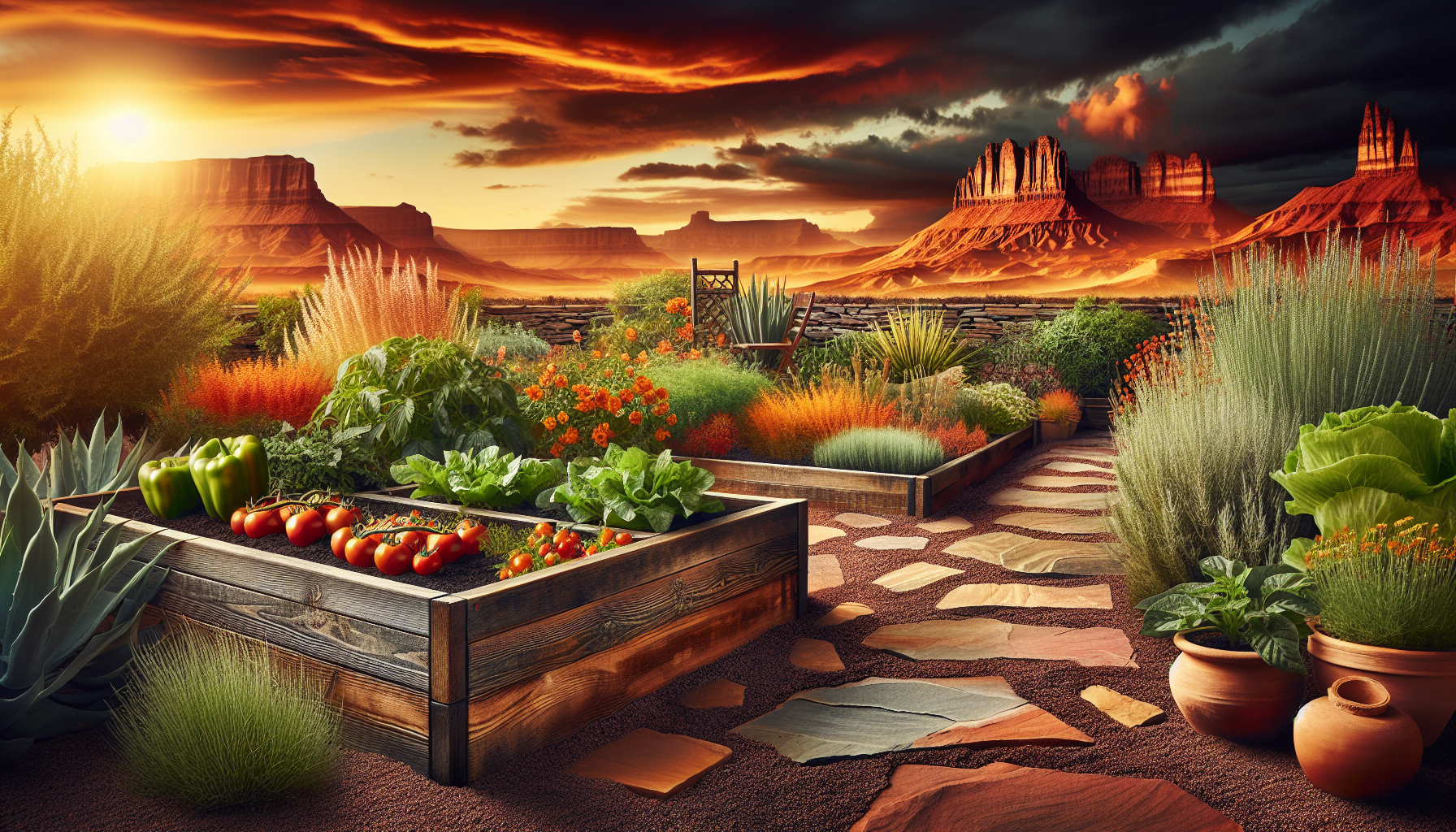Do you dream of transforming your outdoor space into a vibrant vegetable garden while utilizing hardscaping elements? The blend of hardscaping and gardening creates a beautiful and functional landscape that can flourish in your yard. If you’re near Mesa, Arizona, this guide will help you understand how to incorporate hardscaping elements into your vegetable garden design effectively.

Discovering Mesa, Arizona
Mesa is a charming city located in Maricopa County, known for its sunny skies and warm climate. This rapidly growing area is rich in culture, history, and outdoor activities. Residents can enjoy a variety of parks, trails, and community events that showcase the city’s commitment to family-friendly environments.
You will find a mix of suburban living with access to urban conveniences in Mesa. The community spirit thrives here, making it an ideal setting for families and individuals alike. The favorable climate means that you’ll have a longer growing season and the opportunity to cultivate fresh vegetables, fruits, and herbs.
Nestled within the scenic desert landscape, you can enjoy breathtaking views and beautiful sunsets, adding to the charm of your backyard garden. With an abundance of sunshine, selecting a vegetable garden plan that accommodates hardscaping will not only enhance the property’s aesthetic but could also make gardening more enjoyable and manageable.
Understanding Hardscaping
Hardscaping refers to the non-plant elements of landscape design, including materials like stone, concrete, wood, and metal. These materials play a crucial role in creating a structured environment in your garden. When you incorporate hardscaping into your vegetable garden design, you enhance functionality and organization, making it easier to maintain and enjoy.
Benefits of Hardscaping for Your Vegetable Garden
Integrating hardscaping into your vegetable garden design has various benefits that can amplify your gardening experience. Some of these advantages include:
-
Organization: Hardscaped areas can help organize your garden layout, making it easy to maintain plant health. Defined pathways and raised beds allow for smoother navigation.
-
Soil Management: Hard surfaces can help minimize soil erosion and maintain soil health around your plants. Raised beds often have better drainage and can warm up quicker than traditional garden beds.
-
Aesthetic Appeal: Incorporating hardscaping elements adds beauty and structure. Stone pathways, decorative walls, or wooden trellises can make your garden aesthetically pleasing and visually appealing.
-
Functionality: Hardscape features enable easier access for planting and harvesting. They also can create gathering spots for family and friends to enjoy your garden.
-
Drought Resistance: In arid climates like Mesa, hardscaping can reduce the amount of water required for maintaining plant life. Indigenous materials can be used strategically for certain hardscaping designs.
Hardscaping Elements to Consider
Selecting the right hardscaping elements is essential for achieving a practical and inviting vegetable garden. Here are some common options:
1. Pathways
Creating pathways is critical for managing movement within your garden. They allow you to walk without stepping on your planting areas, which protects your crops and soil structure.
-
Material Options: You can use gravel, pavers, or bricks. Each material has its charm and durability, so choosing what fits best with your garden style is important.
-
Width and Accessibility: Ensure pathways are wide enough for easy access, especially if you’re using tools or transporting crops.
2. Raised Garden Beds
Raised beds have become increasingly popular among gardeners. They provide several benefits:
-
Soil Control: You have full control over the soil quality. You can build a mixture that best supports your vegetables, free from the native soil’s issues.
-
Ease of Access: They reduce the need to bend down too much, making planting and harvesting easier.
-
Variety in Height: You can customize the height of your raised beds, accommodating your preferences and any physical limitations.
3. Retaining Walls
Retaining walls can define garden spaces and prevent soil erosion on sloped properties:
-
Material Choices: Use stone, concrete blocks, or brick for sturdy retaining walls. The material can enhance the look of your garden.
-
Functionality: They can provide additional planting space and can even support plants that thrive in vertical environments.
4. Trellises and Arbors
These vertical structures support climbing plants and can add a decorative element to your garden:
-
Space Management: Trellises maximize space, allowing for more varieties of vegetables in a smaller footprint.
-
Aesthetic Addition: They create a visually appealing structure that can be adorned with flowers or climbing vegetables like tomatoes or pole beans.
5. Seating Areas
Including seating can make your garden a retreat where you can relax and enjoy your hard work:
-
Material Considerations: You can use benches, stools, or garden chairs made from wood or metal. Ensure they are weather-resistant for longevity.
-
Strategic Placement: Position seating areas in spots where you can enjoy views of your planted spaces.
Planning Your Vegetable Garden Design
Creating a vegetable garden with hardscaping needs careful planning. Start by assessing the space you have and understanding your needs and preferences.
Step 1: Assessing Your Space
Begin by evaluating your backyard or outdoor area. Measure the space to understand its dimensions and sunlight exposure:
-
Sunlight Exposure: Identify areas that receive full sun for most of the day, as most vegetables thrive in sunny conditions.
-
Wind Conditions: Note if certain areas are more exposed to wind, which may affect plant health.
Step 2: Sketching Your Layout
Creating a rough sketch can help visualize the design. Mark where you want to place hardscaping elements:
-
Paths and Beds: Determine the layout of pathways and raised beds while considering the flow and accessibility.
-
Production Areas: Plan for different vegetable varieties in your beds according to their sunlight needs and heights.
Step 3: Choosing Your Materials
Look into different materials for hardscaping elements. Select options that complement your aesthetic preferences:
-
Natural Stone: Provides a rustic, organic look. It can be used for pathways and walls.
-
Bricks or Pavers: Offer a more structured appearance and ensure durable pathways.
-
Wood: Use for raised beds and trellises, ensuring it’s treated for weather resistance.
Step 4: Plant Selection
Choose vegetables that thrive in Mesa’s climate:
-
Warm-Season Vegetables: Tomatoes, peppers, and cucumbers can grow well during the hotter months.
-
Succession Planting: Plan for early and late-season crops, such as lettuce or radishes, to maximize yield through the seasons.

Maintaining Your Hardscaped Vegetable Garden
Once your hardscaped vegetable garden is established, maintenance is key to enjoying its benefits. Here are some tips:
Regular Watering and Drainage Management
Water your plants consistently, especially during the hot months. Ensure that pathways and raised beds have proper drainage:
-
Check for Erosion: Water should flow away from planting areas to prevent soil erosion.
-
Irrigation Systems: Consider installing drip irrigation lines if maintenance seems challenging, allowing water to reach the roots directly.
Weeding and Pest Management
Regularly check for weeds and pests. The hardscaping boundaries help with weeding but don’t forget to manage pests effectively:
-
Manual Removal: Pull weeds by hand or use a hoe to avoid disturbing your plants.
-
Natural Solutions: Implement companion planting or natural repellents to minimize pest invasion.
Seasonal Adjustments
Seasonal changes can impact your garden’s needs. Be prepared to adjust your approach:
-
Mulching: Apply mulch around plants to conserve moisture and suppress weeds.
-
Covering: Consider covering sensitive plants during cooler nights or unexpected frost.
Enjoying Your Vegetable Garden
The joy of gardening comes not just from growing food but also from the time spent cultivating your space. With hardscaping elements in place, your vegetable garden can serve as an attractive and functional retreat.
Consider inviting family and friends to share your gardening successes. Organize small gatherings or outdoor meals featuring your fresh produce, creating memories while promoting healthy eating.
If you’re on the journey of creating your hardscaped vegetable garden, you might want to reach out to the experts. Xclusive Home Services is here to assist you with all your hardscaping needs, helping you transform your vision into reality.
Contact Information for Xclusive Home Services
For comprehensive hardscaping solutions, connect with them:
- Address: 14505 N Hayden Rd., Ste. 101, Scottsdale, AZ 85260
- Phone: (602) 341-5545
- Email: management@xclusivehomeservicesco.com
In summary, combining hardscaping with vegetable gardening near Mesa can enhance both your garden’s functionality and beauty. By thoughtfully incorporating various elements, you can create a thriving vegetable garden that suits your lifestyle and preferences. Enjoy the gathering of fruitful harvests and the pride that comes with maintaining your hard work.

